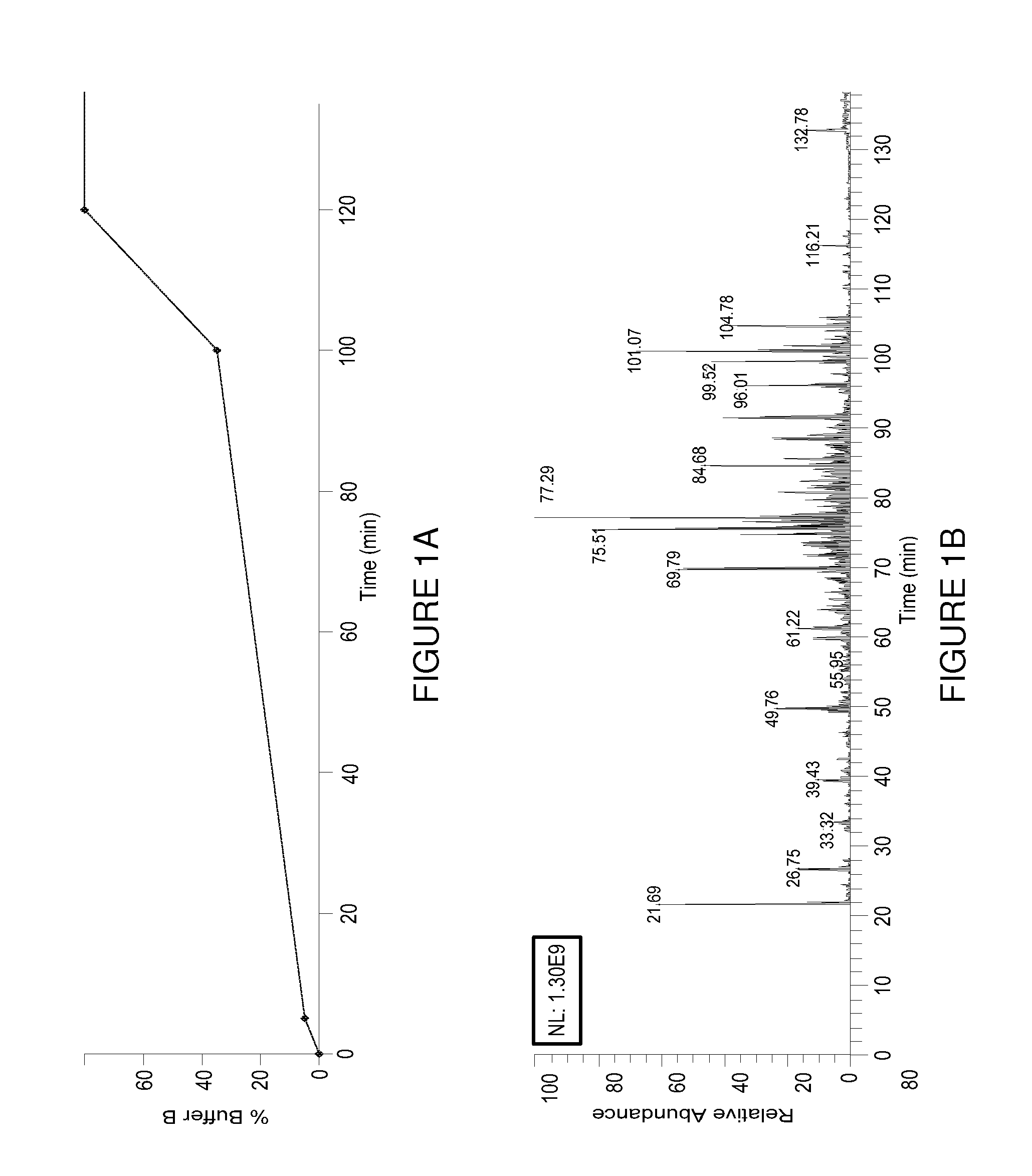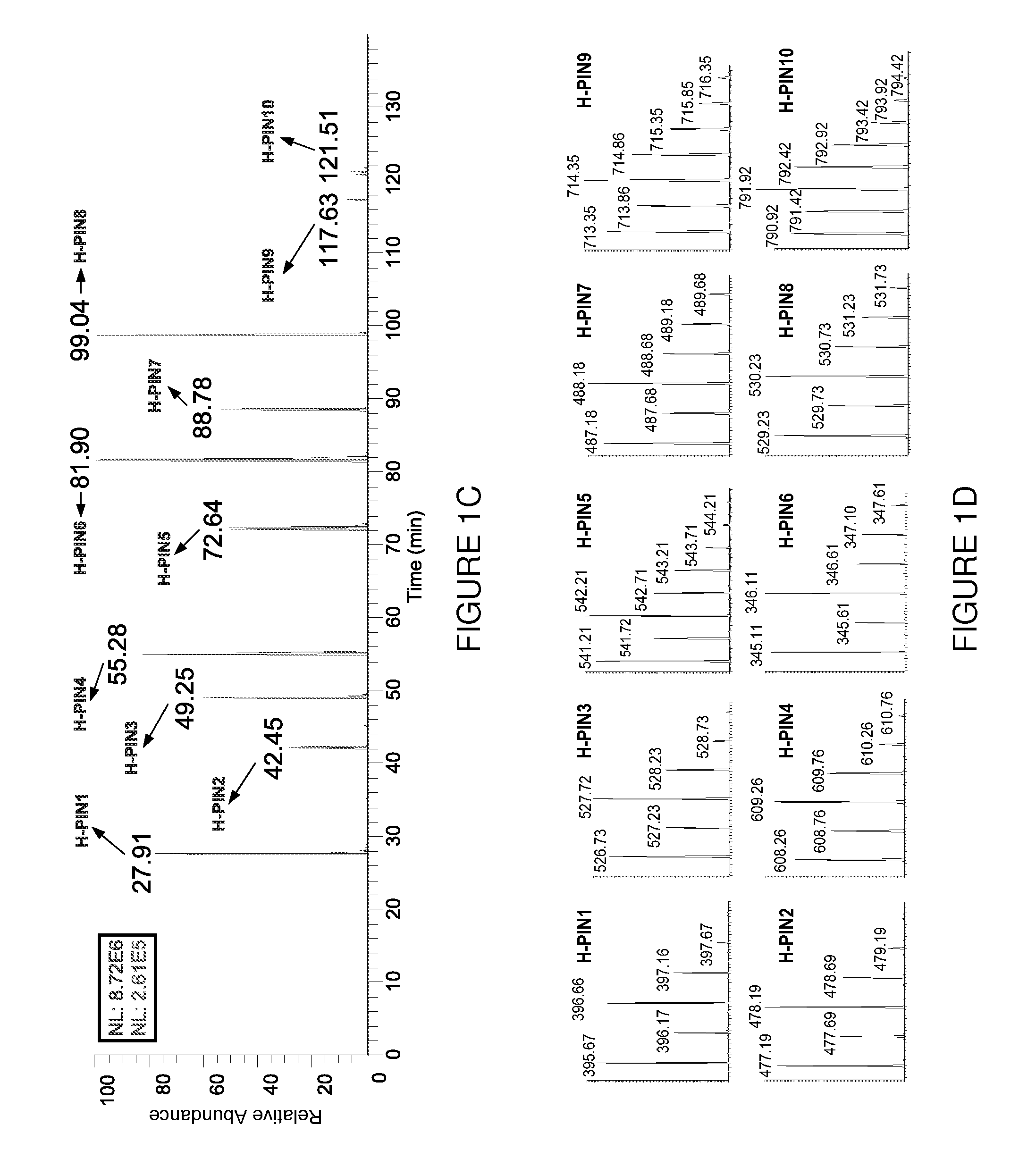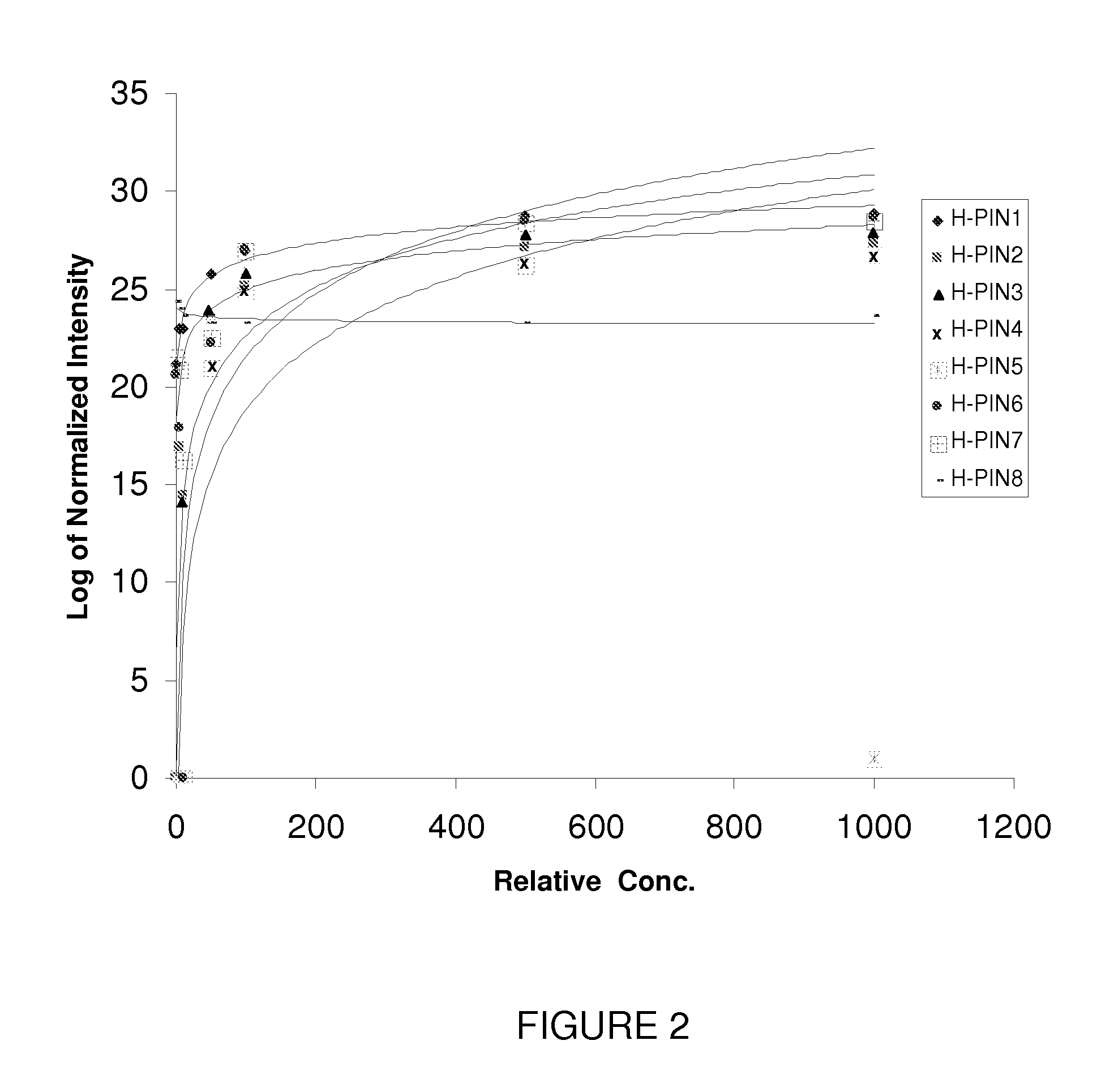Methods of using halogenated peptides as internal standards for liquid chromatography-mass spectrometry
a technology of liquid chromatography and peptides, which is applied in the field of using halogenated peptides as internal standards for liquid chromatography and mass spectrometry, can solve the problems of requiring high reproducibility, unable to meet the requirements of high reproducibility, and completely tainting the calibration curv
- Summary
- Abstract
- Description
- Claims
- Application Information
AI Technical Summary
Benefits of technology
Problems solved by technology
Method used
Image
Examples
example 1
Extracting Peptides From Human Plasma (Serum Glycocapture)
[0072]Glycocapture was performed at the peptide level using the protocol described by Zhou et al. (see Zhou, Y., et al., Anal. Chem. 79, 5826-5837 (2007), which is incorporated herein by reference in its entirety to the extent not inconsistent with the present disclosure). Aliquots of 50 μl of male human plasma were first diluted with the same volume of 100 mM ammonium bicarbonate (pH 8.3), and proteins were then denatured by slowly adding trifluoroethanol (TFE) up to 50% (v / v) final concentration. After the cysteine residues were reduced by TCEP (5 mM) and alkylated in iodoacetamide (10 mM) for 0.5 hour each at room temperature, the samples were further diluted ten fold with 100 mM ammonium bicarbonate to a final volume of about 2 mL.
[0073]Proteins were then digested with 40 μg of sequence-grade trypsin overnight at 37° C. and cleaned up by C18 spin columns (500 mg, Waters, Milford, Mass.). The eluates were then dried down u...
example 2
Concentration and Intensity Optimization for H-PINS
[0074]The ionization efficiency of peptides during ESI is variable and matrix-dependent. Thus, to generate an internal standard mixture with similar signal intensities for each internal standard, the sample load level for each H-PIN was optimized to generate a set of H-PINs with similar signal intensity (see Mirzaei, H., et al., Anal. Chem. 78, 4175-83 (2006), which is incorporated herein by reference in its entirety to the extent not inconsistent with the present disclosure). The criteria for adjusting the H-PIN concentrations were as follows: 1) reach a signal with S / N≧100; 2) avoid chromatographic carryover; 3) avoid chromatographic artifacts such as fronting and tailing to help optimal quantification; and 4) avoid interference with data-dependent acquisition (DDA) and peptide identifications.
[0075]H-PINs 1-7 (see Table 2 below) were solubilized in 2% ACN, 0.1% TFA and H-PINs 8-10 (see Table 2 below) were solubilized in 80% ACN, ...
example 3
Testing the Effect of H-PINS on Data Dependent Acquisition
[0077]A sample of the glycocapture stock solution from Example 1 was analyzed via LC / MS / MS in triplicate. The same experiment was then repeated with a 9 μL sample of the glycocapture stock solution from Example 1 spiked with 1 μL of the H-PIN standard solution from Example 2. The data from each triplicate was then pooled and searched separately using SEQUEST. After data curation using Peptide Prophet (Institute for Systems Biology, Seattle, Wash.), the number of peptides for each dataset with a 2.5% rate of false positives was determined to be 1510 for the glycocapture stock solution sample without H-PINs and 1536 for the glycocapture stock solution sample spiked with H-PINs. This data show that the presence of H-PINs has no negative effect on data dependent acquisition (DDA) experiments.
[0078]The elution profile, isotopic distribution and m / z value for all H-PINs separated using a 95 min gradient from 5 to 35% buffer B are s...
PUM
 Login to View More
Login to View More Abstract
Description
Claims
Application Information
 Login to View More
Login to View More - R&D
- Intellectual Property
- Life Sciences
- Materials
- Tech Scout
- Unparalleled Data Quality
- Higher Quality Content
- 60% Fewer Hallucinations
Browse by: Latest US Patents, China's latest patents, Technical Efficacy Thesaurus, Application Domain, Technology Topic, Popular Technical Reports.
© 2025 PatSnap. All rights reserved.Legal|Privacy policy|Modern Slavery Act Transparency Statement|Sitemap|About US| Contact US: help@patsnap.com



